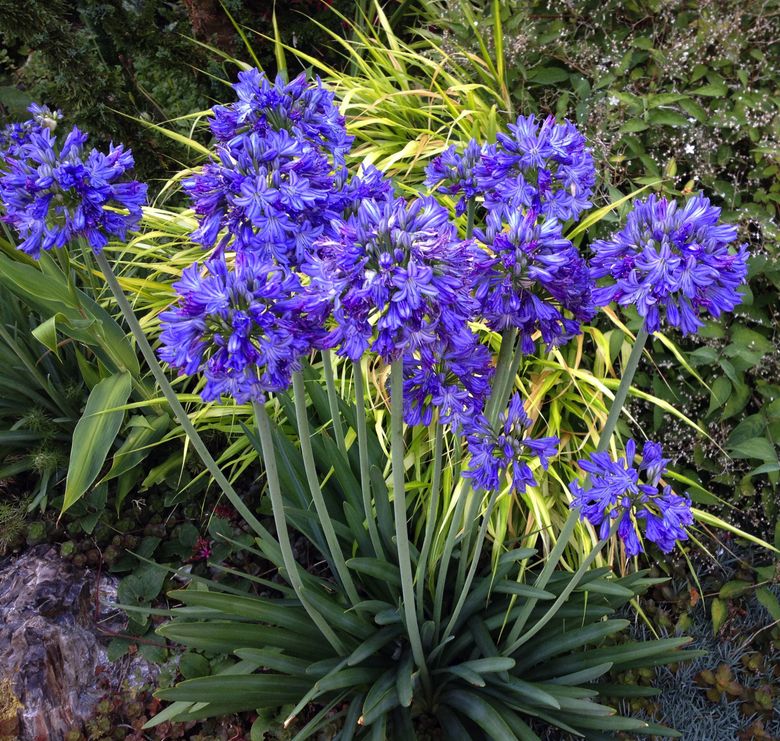Agapanthus Varieties: Selecting the very best for Your Landscape
Agapanthus Varieties: Selecting the very best for Your Landscape
Blog Article
Understanding the Art of Agapanthus Treatment: Necessary Steps for Healthy And Balanced Growth and Dynamic Flowers
In the world of gardening, the cultivation of agapanthus stands as a rewarding undertaking for those that seek to nurture these classy blooming plants. From selecting the right selection to understanding pruning techniques, the trip towards growing prospering agapanthus plants is complex and holds the key to opening the complete capacity of these organic treasures.

Choosing the Right Agapanthus Selection

When choosing the appropriate Agapanthus selection for your yard, consider factors such as environment viability, flower shade, and development behavior. Agapanthus, commonly referred to as Lily of the Nile or African lily, comes in a range of shades varying from tones of blue and purple to white. Select a flower color that complements your existing yard scheme to develop an unified landscape. Furthermore, consider the environment in your area to ensure the Agapanthus range you choose can prosper in your certain conditions. Some varieties are more forgiving of chilly temperatures, while others favor warmer environments. Comprehending the growth practice of various Agapanthus selections is vital for appropriate placement within your yard. Some selections have a clumping development practice, suitable for containers or boundaries, while others have an even more spreading nature, suitable for ground cover or mass growings. By meticulously examining these elements, you can choose the excellent Agapanthus range to enhance the elegance of your yard.
Ideal Planting Problems
Thinking about the ideal ecological requirements is essential for successful Agapanthus cultivation. Agapanthus plants are sensitive to cool temperatures and must be safeguarded from frost during wintertime months.
To ensure healthy and balanced development and vibrant blooms, plant Agapanthus light bulbs at a depth of about 2-4 inches and area them 8-12 inches apart. Including natural issue, such as garden compost, to the soil can enhance water drainage and fertility, advertising durable root advancement. Mulching around the base of the plants aids retain dampness and suppresses weed growth. Regular watering is important, particularly during the expanding season, to keep the dirt constantly wet however not saturated.
Watering and Feeding Tips
Maintaining proper moisture degrees and supplying crucial nutrients are essential elements in the treatment program for Agapanthus plants. When it comes to watering Agapanthus, it is crucial to strike an equilibrium. These plants favor continually damp soil but are vulnerable to root rot if overwatered.
Feeding Agapanthus is important for advertising healthy development and respected blossoms. Use a well balanced fertilizer, such as a 10-10-10 formula, in the early spring as new development emerges. Repeat this application every 6-8 weeks throughout the expanding season. Stay clear of too much fertilization, as it can cause rich foliage at the expense of blossoms. Constantly comply with the maker's instructions for correct dilution and application methods. By following these watering and feeding pointers, you can guarantee your Agapanthus plants prosper and create dynamic, lasting blooms.
Pruning Methods for Agapanthus
Trimming Agapanthus plants at the appropriate times and with correct techniques is crucial for maintaining their health and wellness and advertising optimum growth and flowering. The suitable time to trim Agapanthus is in late winter season or very early springtime before new development emerges.
Deadheading invested blossoms can likewise redirect the plant's power into generating more blooms rather than setting seeds. If you desire to gather seeds for breeding, leave some flowers to fully grown and completely dry on the plant.
Remember to use clean, sharp tools to make exact cuts and minimize the danger of presenting illness. Agapanthus. Normal trimming will help keep your Agapanthus looking cool and healthy while making certain a plentiful display screen of lovely flowers
Taking Care Of Typical Pests and Diseases
After ensuring appropriate trimming techniques for Agapanthus, it is necessary to deal with common pests and illness that can influence the wellness and vitality of these plants. Agapanthus plants are generally hardy yet can still drop victim to certain concerns. One usual bug that impacts Agapanthus is the Agapanthus gall midget. This small, orange fly lays its eggs in the vegetation, bring Go Here about altered development and flower buds that stop working to open up. To combat this pest, trim and destroy any affected plant components and consider using insecticidal soap.
One more typical issue is fungal leaf spot, which offers as dark lesions on the fallen leaves. To protect against fungal illness, ensure great air flow around the plants, avoid overhanging watering, and get rid of any type of infected fallen leaves quickly. Additionally, Agapanthus plants can deal with root rot if they are planted in badly draining dirt. To click over here now avoid this, plant Agapanthus in well-draining dirt and stay clear of overwatering. By being attentive and taking punctual activity against conditions and insects, you can help your Agapanthus plants thrive and create vivid blossoms.

Final Thought
In verdict, grasping the art of agapanthus care includes choosing the right variety, offering optimal growing conditions, correct watering and feeding, ideal pruning methods, and attending to common insects and diseases. By adhering to these important actions, you can make certain healthy development and vibrant blossoms for your agapanthus plants. Bear in mind to routinely monitor and maintain your plants to advertise their general health and long life.
To ensure healthy and balanced development and vivid blooms, plant Agapanthus bulbs at a deepness of about 2-4 inches and space them 8-12 inches apart. By complying with these watering and feeding tips, you can ensure your Agapanthus plants grow and create dynamic, durable blossoms.
One typical parasite that affects Agapanthus is the Agapanthus gall midge. In addition, Agapanthus plants can experience from origin rot if they are grown in inadequately draining dirt. By complying with these vital actions, you can make certain healthy growth and vibrant blossoms great site for your agapanthus plants.
Report this page